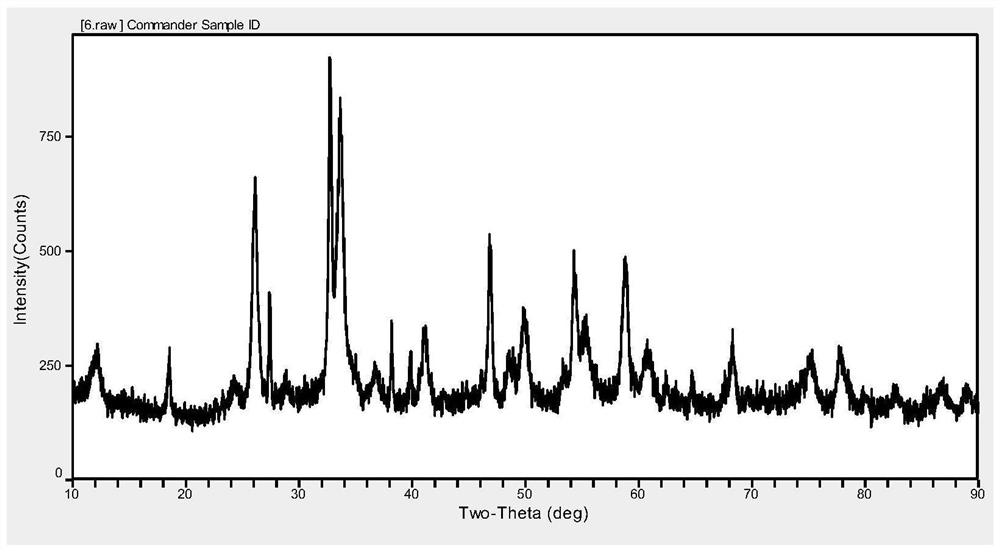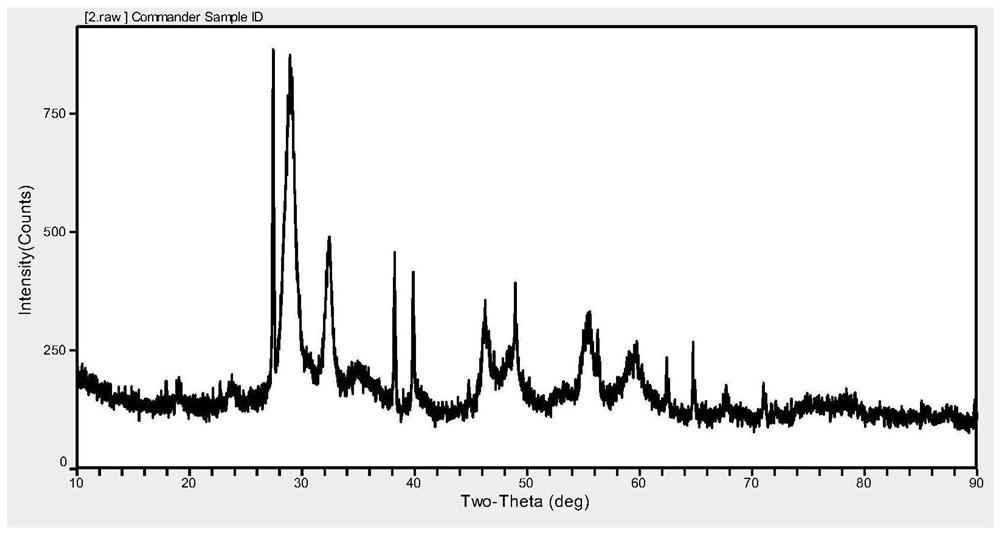A kind of preparation method of z-form bismuth-based photocatalyst
A photocatalyst, bismuth-based technology, applied in the field of nanomaterials, can solve the problems of cost control and quality optimization obstacles, and achieve the effect of high redox potential
- Summary
- Abstract
- Description
- Claims
- Application Information
AI Technical Summary
Problems solved by technology
Method used
Image
Examples
Embodiment 1
[0039] A preparation method of a Z-form bismuth-based photocatalyst, the method steps are as follows:
[0040] (1) Preparation of bismuth iodide precursor
[0041] Disperse 2.5 mmol of bismuth nitrate in 15 mL of ethylene glycol, dissolve it completely after stirring for 1 h, add it to 5 mL of potassium iodide aqueous solution containing 1 mmol of potassium iodide, and continue to stir for 1 h to fully react to obtain reaction solution A.
[0042] (2) Preparation of bismuth iodide-bismuth tungstate precursor
[0043] Add 10 mL of sodium tungstate aqueous solution containing 1 mmol sodium tungstate to the reaction solution A prepared in step (1), and continue stirring for 0.5 h to obtain a reaction solution with a reducing chemical atmosphere, which contains bismuth iodide-bismuth tungstate precursor.
[0044] (3) Transfer the reaction solution obtained in step (2) to a hydrothermal reaction kettle with a volume of 50 mL, and react at 140° C. for 10 hours; after naturally coo...
Embodiment 2
[0047] A preparation method of a Z-form bismuth-based photocatalyst, the method steps are as follows:
[0048] (1) Preparation of bismuth iodide precursor
[0049] Disperse 2.3 mmol of bismuth nitrate in 15 mL of dimethyl sulfoxide, dissolve it completely after stirring for 1 h, add it to 5 mL of sodium iodide aqueous solution containing 1 mmol of sodium iodide, continue to stir for 1 h, and fully react to obtain a reaction solution, wherein A precursor containing bismuth iodide.
[0050] (2) Preparation of bismuth iodide-bismuth vanadate precursor
[0051] To the reaction solution obtained in step (1), add 5 mL of sodium vanadate aqueous solution containing 1 mmol of sodium vanadate, continue stirring for 0.5 h, add 5 mL of ascorbic acid aqueous solution containing 0.3 mmol of ascorbic acid to obtain a reaction solution with a reducing chemical atmosphere , which contains bismuth iodide-bismuth vanadate precursor.
[0052] (3) Transfer the reaction solution obtained in ste...
Embodiment 3
[0055] A preparation method of a Z-form bismuth-based photocatalyst, the method steps are as follows:
[0056] (1) Preparation of bismuth iodide precursor
[0057] Disperse 2.2 mmol of bismuth nitrate in 15 mL of water, stir for 1 hour and disperse evenly, add 5 mL of sodium iodide ethylene glycol solution containing 1 mmol of sodium iodide, continue to stir for 1 hour, and fully react to obtain a reaction solution, which contains iodine Oxybismuth precursor.
[0058](2) Preparation of bismuth iodide-bismuth ferrite precursor
[0059] To the reaction solution obtained in step (1), add 5 mL of ferric chloride ethylene glycol solution containing 1 mmol of ferric chloride, continue stirring for 0.5 h, and add 5 mL of aqueous glucose solution containing 0.2 mmol of glucose to obtain a reducing chemical solution. Atmospheric reaction solution containing bismuth iodide-bismuth ferrite precursor.
[0060] (3) Transfer the reaction solution obtained in step (2) to a hydrothermal re...
PUM
 Login to View More
Login to View More Abstract
Description
Claims
Application Information
 Login to View More
Login to View More - R&D
- Intellectual Property
- Life Sciences
- Materials
- Tech Scout
- Unparalleled Data Quality
- Higher Quality Content
- 60% Fewer Hallucinations
Browse by: Latest US Patents, China's latest patents, Technical Efficacy Thesaurus, Application Domain, Technology Topic, Popular Technical Reports.
© 2025 PatSnap. All rights reserved.Legal|Privacy policy|Modern Slavery Act Transparency Statement|Sitemap|About US| Contact US: help@patsnap.com



